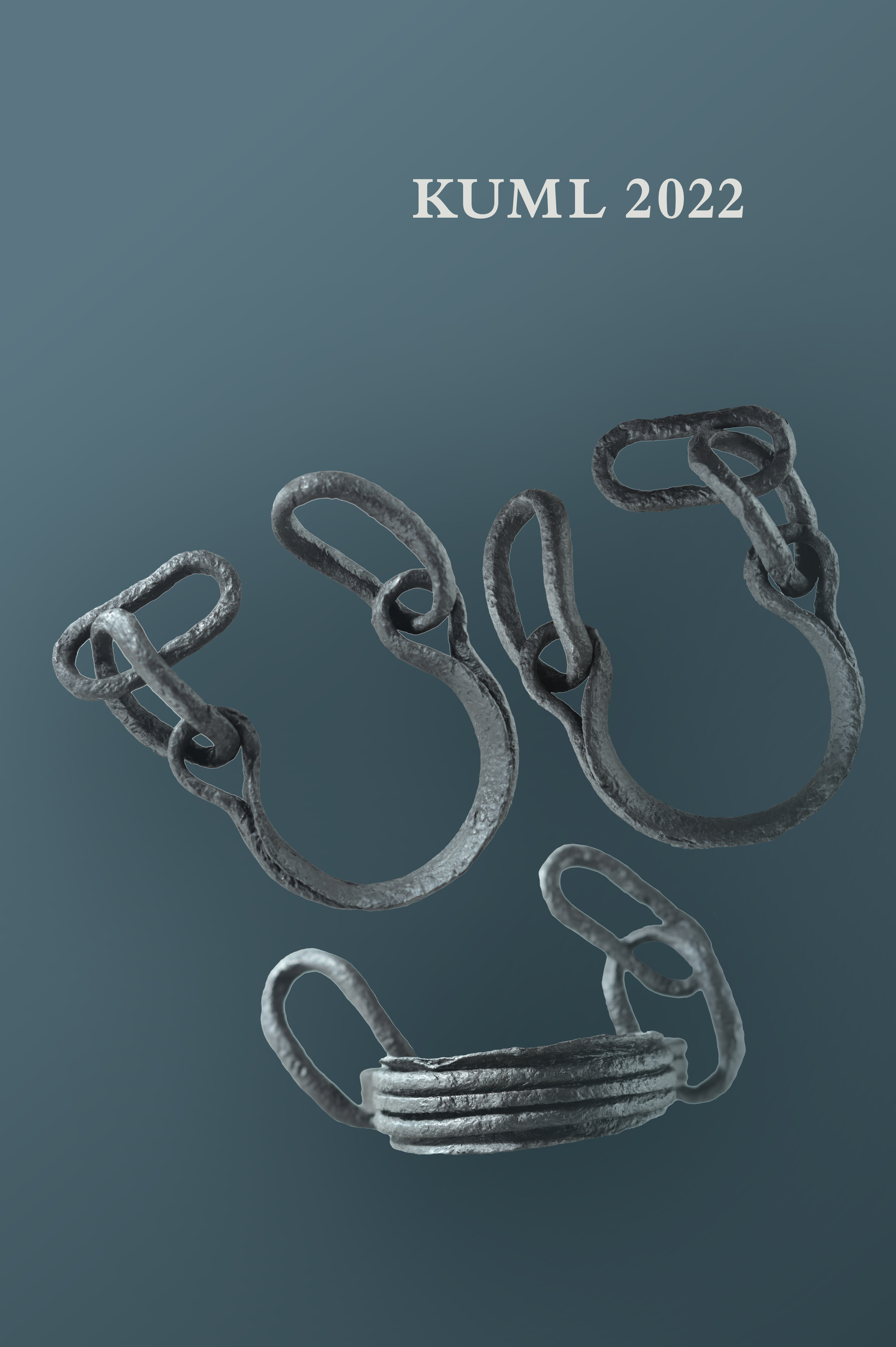Bromme genbesøgt
Når ældre arkæologiske lokaliteter bliver historiske
DOI:
https://doi.org/10.7146/kuml.v71i71.142069Resumé
Bromme revisited
When early archaeological localities become historical
State prosecutor and amateur archaeologist Erik Westerby had a dream of discovering Denmark’s first Palaeolithic settlement. He energetically and systematically searched the soil and relief maps of Denmark to find his ‘needle in a haystack’. Finally, in 1944, he struck gold when he discovered a Late Palaeolithic settlement at Bromme, northwest of Sorø. But all was not well. Westerby fell ill and was obliged to let Therkel Mathiassen of the National Museum of Denmark handle the excavation of the site, which he undertook in 1945. Unhappy with Mathiassen’s methods, Westerby continued to excavate at Bromme until 1950. The site was then left untouched till 2021, when the old excavation was reopened. This article examines the feud between Westerby and Mathiassen in the light of the recent new excavation.
Westerby’s troubles didn’t begin at Bromme. The first site he discovered and excavated was the Mesolithic locality of Bloksbjerg, near Klampenborg. After excavating there for 8 years, he published his findings to international acclaim, but national criticism. He presented the publication as his doctoral thesis to the University of Copenhagen, but it was rejected. This sparked his feud with the Danish archaeological establishment.
Westerby then went on to discover another Mesolithic site, at Øgaarde in Åmosen, but due to him having to juggle archaeology and law school, he decided to let the National Museum handle the excavation instead. This was led by Therkel Mathiassen. Westerby visited the site twice during excavation and was appalled by what he witnessed. The methods employed were chaotic and some resulted in the destruction of more lithics than were found.
His next discovery was the Bromme locality. But this site was different, it wasn’t just a confirmatory record, this was something completely new. Shortly after the discovery, however, he became ill and was forced to let Mathiassen excavate the site instead, fully knowing he would be unhappy with the result. And when Mathiassen began to publish his findings, Westerby found that all his hard work in systematically searching for the site was not valued at all. This left him very unhappy with the situation. In his final letter to Mathiassen, he wrote that he was so displeased that it would’ve been better for him if he never found the site in the first place.
While Westerby’s frustrations were deeply personal, he also had a different methodological approach to that of Mathiassen. Westerby set great store by a layer dated to the Allerød oscillation, which provided definitive proof that the site was indeed from the latter part of the ice age. During the 2021 excavation, some parts of Mathiassen’s excavation was re-examined. Trench 1 contained an intact posthole, which indicates that Mathiassen didn’t excavate deeper than 50 cm. In trench 4, Mathiassen’s excavation was only observed to a depth of 35 cm, while the Allerød layer was found untouched at a depth of 40-50 cm. Trench 14 was a re-excavation of much deeper test pit dug by Mathiassen, but this too missed the Allerød layer, as his excavation was only observed to a depth of 1.2 m, while the Allerød layer was discovered, untouched, at a depth of 1.7 m. This indicates that caution should be exercised when considering the results obtained by Mathiassen.
In Westerby’s eyes, not digging deep enough was not the only problem with Mathiassen’s excavations, another was the careless and chaotic nature of his methods. If Westerby’s criticism was well-founded, overlooked and broken lithics would be expected to be found when examining the backfill from Mathiassen’s excavation. Fifty-three lithics were discovered in trench 4, but only two of them were from Mathiassen’s refill, while 36 lithics were found in trench 5 but 22 of these were from Mathiassen’s backfill. Furthermore, three broken blades were found during the excavation of trench 14. This suggests that Westerby’s critique was justified. However, when his prior excavation was re-examined, eight lithics were found, five of which were in his backfill.
These problems have now become apparent due to the unique opportunity to re-excavate this important site. Anders Fischer and Finn Ole Sonne Nielsen have re-examined the material recovered by both Mathiassen and Westerby and have argued that the site comprises multiple chronologically and typologically different phases. But their claim is based on the recorded distribution the lithic artifacts, and this might not reflect the presence of different settlements but is perhaps just an expression of a chaotic excavation.
Finally, when reinvestigating an old excavation, the material recovered is not only from the original context: A new context has been introduced, and this is reflected in the findings, too. In Westerby’s old trench XV, bracing from his excavations was left behind, and the archived plans and drawings show how this was used. Metal foil from Westerby’s packed lunch was also found. A trowel forgotten during his excavation was also uncovered in Mathiassen’s trench. These were not recorded as archaeological finds but should perhaps be considered such as they are now also part of the history of the site. Bromme is no longer just a Palaeolithic site, it is now also an archaeological site, and a historical one, too.
Downloads
Publiceret
Versioner
- 2024-06-18 (2)
- 2023-12-04 (1)
Citation/Eksport
Nummer
Sektion
Licens
Fra og med årgang 2022 er artikler udgivet i Kuml med en licens fra Creative Commons (CC BY-NC-SA 4.0).
Alle tidligere årgange af tidsskriftet er ikke udgivet med en licens fra Creative Commons.


